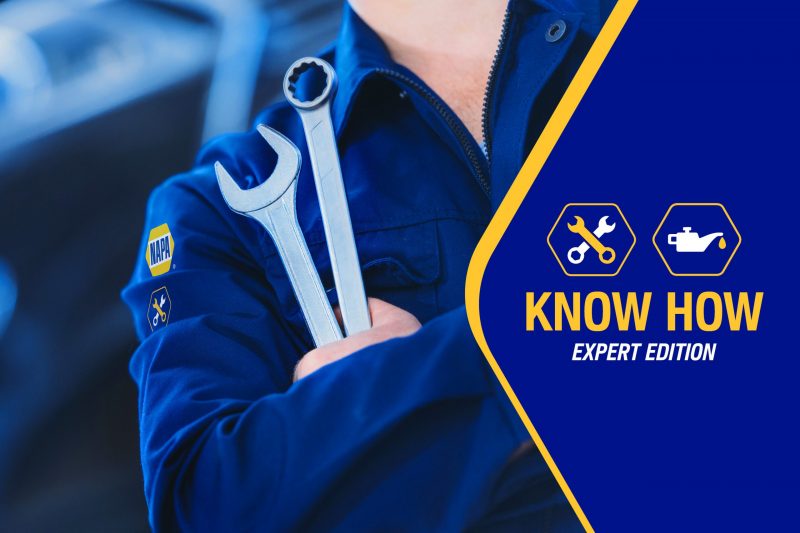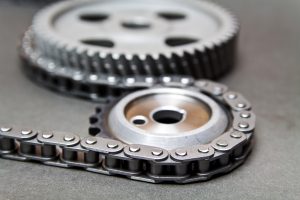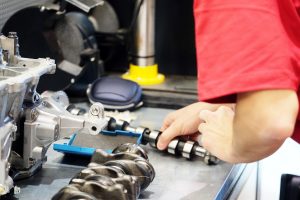
Know How – Expert Edition – The Effects of Oil on Engine Timing
01 Jun 2021
Category:
With Nick Aldridge
Nick has several years of expertise in the automotive industry as a category specialist in oil. As our resident oil expert in NAPA, Nick is well-versed in how NAPA oil products can be used to best suit your needs and those of your customers. In this edition of Know How Expert Edition, Nick will be detailing the importance of engine oil in keeping timing chains and other engine components lubricated to prevent catastrophic failure. He will also provide a walkthrough of the timing chain replacement process and how oil specifications are key to ensuring a successful repair. If you would like to find out more or require further technical assistance, please contact the NAPA Oils Technical Line on 0121 569 2359.
INTRODUCTION
Due to engine oil lubrication, most OEMs view timing chains as ‘fit for life’, excluding them from service inspection and warranty replacement. If timing chains are forced to operate under low oil pressure conditions, however, this can lead to serious component wear and eventual catastrophic failure. When installing timing chain replacements, therefore, meeting OE oil specifications ensures proper lubrication throughout their lifespan.
CAUSES
 There are several potential factors in engine component wear, but two of the most common ones are the result of modern manufacturing practices. Namely, OEM service intervals have almost tripled the number of suggested miles before engine oil changes are required, and the widespread use of start/stop engine technology has led to engines operating in low oil pressure (and high component wear) conditions more frequently. These often result in the failure of timing chains and other engine components due to insufficient lubrication and oil contamination, the most common form of which is elongation (or stretching) of the chain past its factory set clearances.
There are several potential factors in engine component wear, but two of the most common ones are the result of modern manufacturing practices. Namely, OEM service intervals have almost tripled the number of suggested miles before engine oil changes are required, and the widespread use of start/stop engine technology has led to engines operating in low oil pressure (and high component wear) conditions more frequently. These often result in the failure of timing chains and other engine components due to insufficient lubrication and oil contamination, the most common form of which is elongation (or stretching) of the chain past its factory set clearances.
OIL
 Engine oil typically degrades into a hostile state as a result of incorrect oil grades/specifications or the contaminating presence of foreign agents, such as fuel, dirt and particles of metal, carbon or other abrasive chemicals. These foreign agents can wear engine components or even block oil galleries and feed holes, reducing oil flow to the timing chain tensioner. This can result in lubrication anomalies that wear the timing chain until it becomes elongated and ultimately fails. Because modern engineering tolerances are rigid, the amount of contamination required to create hostile oil conditions is often lower than one might expect.
Engine oil typically degrades into a hostile state as a result of incorrect oil grades/specifications or the contaminating presence of foreign agents, such as fuel, dirt and particles of metal, carbon or other abrasive chemicals. These foreign agents can wear engine components or even block oil galleries and feed holes, reducing oil flow to the timing chain tensioner. This can result in lubrication anomalies that wear the timing chain until it becomes elongated and ultimately fails. Because modern engineering tolerances are rigid, the amount of contamination required to create hostile oil conditions is often lower than one might expect.
To ensure that timing chains and other engine parts are operating under optimum conditions, it is important to confirm that engine oil replacements are both timely and tailored to OE specifications regarding grade and composition. All NAPA oil products are supported by a 100% manufacturer’s warranty guarantee which ensures that they meet OE levels of quality using the latest advanced additive technology to protect your vehicle against wear and tear.
 PREPARATION
PREPARATION
First, identify the cause of failure and make sure to address it before the installation of a replacement timing chain. Make sure to install in clean conditions with all accumulated contaminants removed from the engine. The oil sump should also be removed, and the oil pick up pipe cleaned. Camshafts should be examined closely for damage and replaced if necessary, and the oil lubrication system should also be meticulously cleaned, with all blockages and contaminants removed.
Replacement
 Add engine flush to the engine oil and allow the engine to run for approx. 10 minutes to reduce contaminants and boost hygiene. To prevent compromising engine timing during the installation, use the engine locking tool specified/recommended by the OEM. Confirm that all pipes have been inspected for blockages, as failure to remove blockages will impact the function of the replacement kit. Once all engine components have been cleaned, remove any oil residue or carbon deposits before refitting them. The new timing chain tensioner MUST NOT be released before the new timing chain kit has been fully installed. Clean every part and mating surface you plan to replace, as insufficient cleanliness will compromise your repair.
Add engine flush to the engine oil and allow the engine to run for approx. 10 minutes to reduce contaminants and boost hygiene. To prevent compromising engine timing during the installation, use the engine locking tool specified/recommended by the OEM. Confirm that all pipes have been inspected for blockages, as failure to remove blockages will impact the function of the replacement kit. Once all engine components have been cleaned, remove any oil residue or carbon deposits before refitting them. The new timing chain tensioner MUST NOT be released before the new timing chain kit has been fully installed. Clean every part and mating surface you plan to replace, as insufficient cleanliness will compromise your repair.
 Replace the rotary seals, making sure that they are fitted flush with no damage to the sealing surfaces of the seal or the engine. Then tighten the fixing bolts to OEM specifications and carry out two revolutions on the engine by hand to check for piston-to-valve contact.
Replace the rotary seals, making sure that they are fitted flush with no damage to the sealing surfaces of the seal or the engine. Then tighten the fixing bolts to OEM specifications and carry out two revolutions on the engine by hand to check for piston-to-valve contact.
Finally, install a new NAPA oil filter and check the sump pan, oil pump and oil pick up pipes for damage, making sure to clean or replace them as necessary. Refill the engine with NAPA oil meeting the OE recommended grade and specifications to finish your timing chain replacement.
Did you know?
You can use NAPA’s bespoke oil site at www.NAPA-oil.co.uk to see which of our oil products best suits a specific make and model of vehicle. Simply enter the vehicle’s registration number to find the correct oil for the job.
Become a NAPA Stockist Download PDF Guide
Oil Colour and Associated Myths
Committed to quality, NAPA partnered with Valvoline™ Global Operations to develop a range of high-quality...
Read MoreKNOW HOW - TECHNICAL BULLETIN - TB-NFO-01
Fitment Challenges with Oil Filters N.B. Important Information Please be aware of the differently designed...
Read MoreKnow How - Expert Edition - Brake Fluid Testing
It can be easy to forget about and neglect your brake fluid, but doing so can result in a total braking failure. For a better understanding of why, how, and when you should be testing (and changing) brake fluid, look no further than NAPA Know How.
Read More